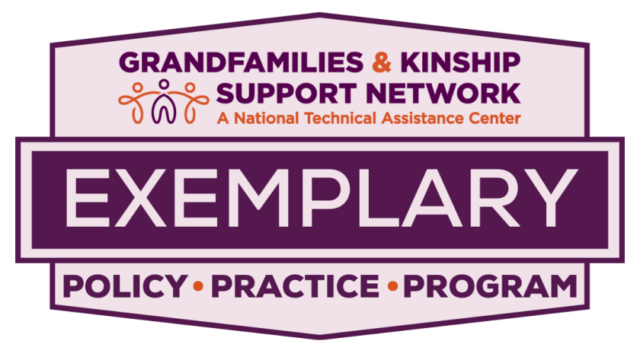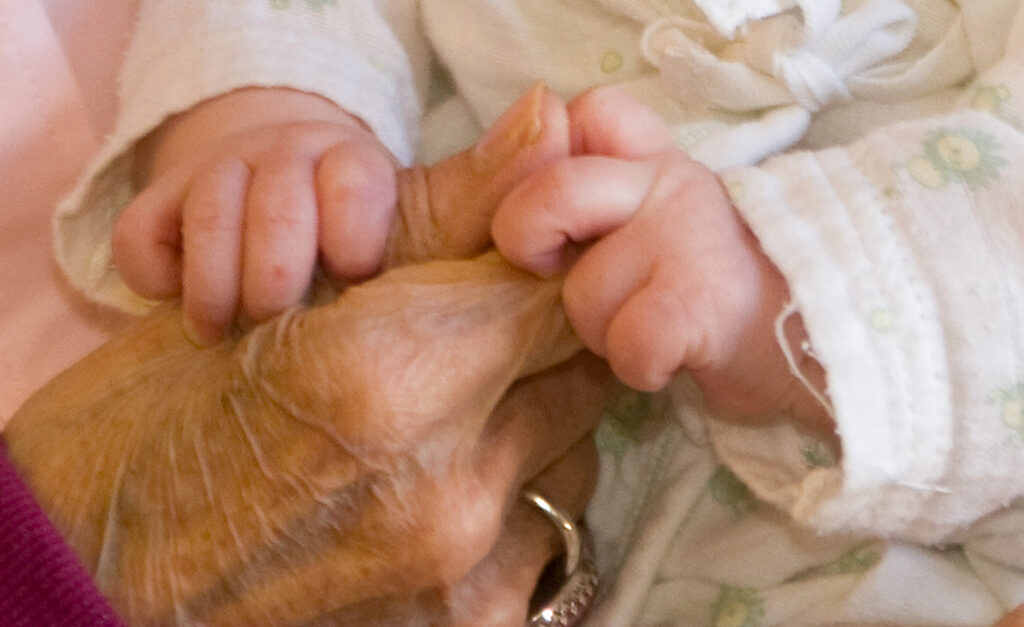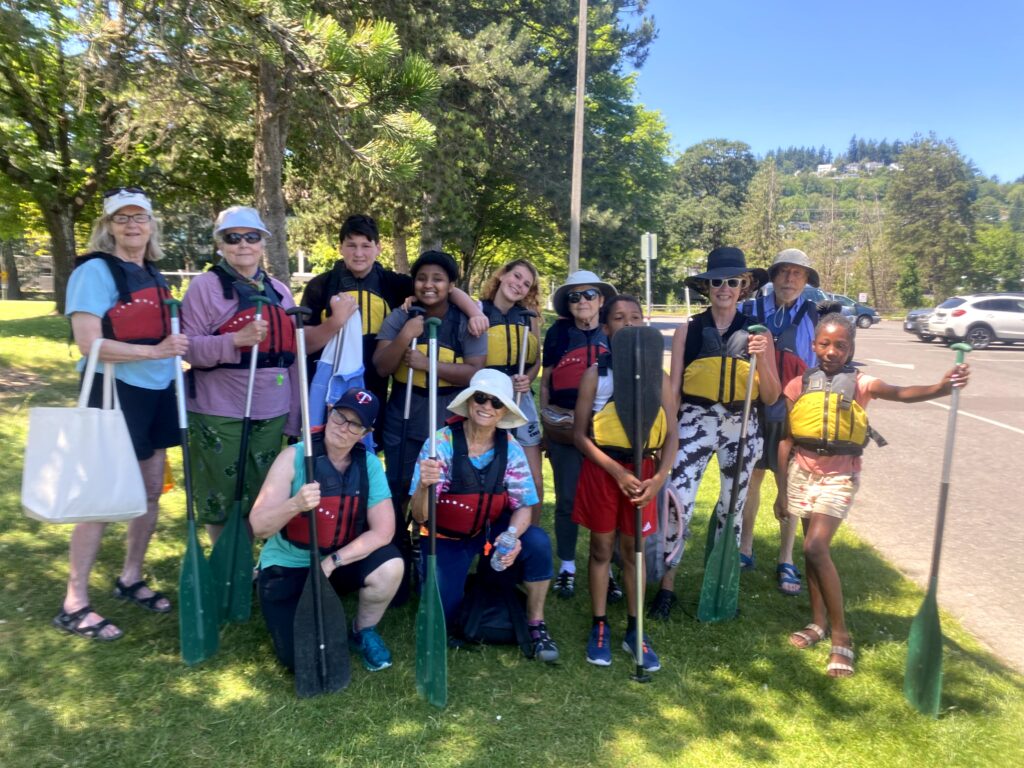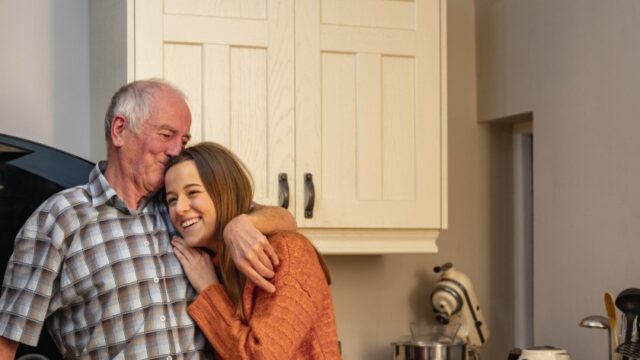Exemplary Programs
Bridge Meadows Intergenerational Housing Community – Oregon
Download This Resource
Bridge Meadows was founded in 2005 as an intergenerational housing community. Driven by the understanding that community is a tool to help heal past trauma, Bridge Meadows created housing communities to address the interconnected social needs of three groups of people: children involved in foster care who have experienced trauma; foster parents and other caregivers, such as kin caregivers, who step up to care for them and need help from community; and older adults who struggle with isolation and a lack of social connection. With communities in three locations throughout Oregon state (Portland, Beaverton, and Redmond), Bridge Meadows is designed to encourage connection between generations by having people of different generations live alongside each other, encouraging the use of multi-purpose community rooms such as activity rooms, and providing intergenerational events and activities. Additionally, Bridge Meadows offers a variety of therapeutic approaches, including support groups and counseling.
Bridge Meadows is not kin-specific, although most of the adoptive parents living at Bridge Meadows are kin caregivers and are raising sibling sets of three to four children. Recognizing the unique way Bridge Meadows provides intergenerational support for children, caregivers, and older adults through intentional housing, programming, and therapeutic services, the Grandfamilies & Kinship Support Network is thrilled to designate Bridge Meadows as an exemplary program.
Eligibility for Services and Intake
Families desiring to live at Bridge Meadows must be in the process of adopting or fostering youth, ideally sibling groups, and they must be referred to Bridge Meadows through the Oregon Department of Human Services (ODHS). Bridge Meadows staff members indicate the caregivers in referred families are often kin caregivers, though this is not a requirement. A memorandum of understanding (MOU) is in place with ODHS, and a relationship has been built between staff at both agencies to receive and respond to referrals. An occasional referral may come from a caseworker or other professional, rather than from the department itself, and in those cases, Bridge Meadows staff confirms with ODHS that there is an open child welfare case before proceeding with intake.
While there are no other set criteria required to qualify, staff members aim to evaluate what support the family may need and understand how that family may benefit from the community before accepting a referral. Staff members emphasize that Bridge Meadows is an intentional community living program with the goal of building a support network, and they work to ensure the caregiver or elder is committed to community living. All programing, events, and services are offered to families immediately upon moving into the community.
Service Population
Bridge Meadows has three housing communities of approximately 35 to 45 units each, all in the state of Oregon. Each community consists of units reserved for older adults (referred to as “elders” by the program) and units reserved for adoptive families (most of which are headed by kin caregivers). The townhomes for caregivers are intentionally built to accommodate larger families, recognizing that many caregivers are adopting or receiving guardianship of sibling groups.
A total of 230 people currently live in the three Bridge Meadows communities. Approximately 55% of these residents are caregivers, children, and youth. The remaining 45% are elders. Most of the family households have three to five members, with approximately 95% headed by a single adult.
Bridge Meadows residents are encouraged to stay for as long as they need for their families or until their children are ready to launch, as the emphasis on community living encourages long-standing relationships with members. Approximately 95% of residents maintain stable housing, with some of the longer-term residents remaining at Bridge Meadows for over ten years.

Services
Bridge Meadows uses a strength-based approach to services, which recognizes that all individuals bring unique value and skills to the community. Beyond housing, the services offered are intended to be community-focused, encouraging intergenerational connectedness. Staff members note that some of the most valuable programming is done organically, such as children riding bikes outside while elders watch them, or community gardens that are shared among all residents. In addition, the following formalized services are offered:
One-On-One Support
The community support specialist (CSS) offers monthly one-on-one contact to each community member. This is an informal time for the CSS worker to check in with community members, build a therapeutic and supportive relationship, and identify if there are any needs that may be applicable for learning topics during support groups or other programming.
Support Groups
Referred to as “circles,” these staff-facilitated groups are offered biweekly at each location, with the goal of members attending once a month. The groups cover a variety of topics, including parenting skills and available resources (accompanied by dissemination and discussion).
Community Meals
“The Happiness Hour” is a monthly meal held in the community room. This meal is planned and cooked by one or several of the residents, providing an opportunity for all community members to gather around food.
Therapy
Kinship House, an advocacy and mental health organization, offers therapy to children and caregivers. At the Beaverton location, Kinship House has an office and provides on-site therapeutic services.
Staff
The executive director and associate director have been on staff for 16 and 14 years, respectively. Additional staff members include the resource development and communications director, finance and operations director, resource development and administrative staff, research and evaluation coordinator, community program manager, and community support specialists. There are two community support specialists at each location whose role is to support the needs of residents through rapport building, regular one-on-one meetings, making referrals, conducting support groups, and a variety of other direct-service tasks.

Bridge Meadows prioritizes diversity in its workforce, aiming to reflect the communities they serve. In building a team of staff members from various backgrounds and lived experiences, including adoptees, adoptive parents, communities of color, and immigrants, they strive to create an inclusive workplace that fosters innovation and empathy. Bridge Meadows further integrates diversity, equity, and inclusion practices at the staff level through ongoing discussions in staff meetings, conferences, and individual supervision sessions.
Key Partners
Bridge Meadows is rooted in the community and has a myriad of valuable partners who contribute to the organization’s work:
- AARP – provides advocacy, information, and services for older adults to improve their quality of life.
- Age Plus – offers support and resources to enhance the well-being and independence of older individuals across the state of Oregon.
- Cathedral Park Performing Arts Collective (CPPAC) – offers music classes to adults and children/youth.
- George Fox University, Oregon Health Sciences University, and Portland State University – academic institutions providing interns and community member identified needs programming.
- Kinship House – provides onsite therapy and art therapy for children and families who have experienced foster care and adoption.
- Oregon Department of Human Services, Child Welfare Division –refers families to Bridge Meadows and provides volunteers and interns to Bridge Meadows.
- Oregon Adoption Resource Exchange –provides post-permanency resources to kin caregivers who have adopted or received permanent guardianship.
- Oregon Post Adoption Resource Center –mobilizes caregivers by connecting them to community supports that promote hope and healing for their children and youth.
- Smart Reading – promotes literacy and reading skills among children through volunteer-led programs.
- Tualatin Hills Park & Recreation District – provides summer activities for youth.
Additionally, the day-to-day program implementation at Bridge Meadows is successful because Bridge Meadows staff and members are partners with each other in carrying out the mission. For instance, members are encouraged to initiate, plan, and run their own activities and events. The staff is available to assist physically or financially, but members are encouraged to take the lead in hosting a meal, check in on a neighbor in a time of need, and develop friendships with each other.
The vender policy at Bridge Meadows mandates the inclusion of minority-owned, women-owned, and emerging small businesses, promoting economic diversity within their network of partners.
Caregiver Engagement
As members of the Bridge Meadows community, caregivers are engaged in the daily operation and event development of the intergenerational housing community. The experiences and perspectives of caregivers, elders, and youth shape the policies, program implementation, staffing/hiring practices, and service delivery at Bridge Meadows. For example, when two of the communities were built, the design features were informed by feedback from current residents, leading to the expansion of communal spaces like the lobby to facilitate intergenerational connections and reduce social isolation, as well as additional safety measures with the design of the hallways and door entries.
Bridge Meadows is amazing. They need to be all over the world.
Caregiver
Formally, the staff conducts an annual survey to receive feedback from program residents. There are three surveys: one for elders, one for caregivers, and one for children. These surveys are an opportunity for participants to provide feedback on the community, as well as on individual needs. The staff implements ideas from the surveys after review. In addition to the annual survey, community members are also given an opportunity to provide feedback through a satisfaction survey, which addresses levels of satisfaction with both program staff and property management.
Informally, staff members engage with caregivers through conversation in the community or during scheduled monthly one-on-one meetings. Staff members plan support group topics or other events based on the individual needs of residents that may come to the surface during these informal interactions. For example, when talking to caregivers about social support and connection, a staff member learned that caregivers were interested in learning more about how to talk to their children about reproductive health, which led to the development of an educational learning opportunity.
It is such a blessing to live here. This gave the kids more help through on-site therapy with Kinship House, and elders taking the kids on trips. The staff have always been supportive of the children and getting their needs met.
Caregiver
Outreach to Families
Bridge Meadows does not engage in formal outreach because all referrals come directly through ODHS. There is an MOU in place with ODHS, which guides the relationship between these two agencies. Due to the positive reputation Bridge Meadows has in the community, there is currently a waitlist at all locations.
The Bridge Meadows leadership team holds a 60-minute information session each quarter, for people around the country interested in learning more about developing a program similar to Bridge Meadows.

Funding and Sustainability
Bridge Meadows relies on a mix of revenue streams that includes individual and business contributions (12.3%), foundation and corporate grants (24.7%), special events (18.4%), government grants (30.25%), and earned income (rental payments, consulting fees, developer fees) (14.3%). Having multiple revenue streams is a sustainable model that ensures greater security. Bridge Meadows continues to maintain strong relationships with foundations, corporations, and individuals to ensure financial stability and to continue expanding to new communities in need. The Bridge Meadows Board of Directors has a Finance committee that meets regularly to ensure that activities track with the budget.
Demonstrating Success and Continuing Quality Improvement
Bridge Meadows continually evaluates and adapts practices to ensure they resonate with the diverse needs of the community, completing two sets of surveys annually: a feedback survey to gather information on individual and community needs and a satisfaction survey to gather information on staff and property management. Survey results are used to inform changes to programming and operations. By actively addressing barriers to participation and seeking feedback from all community members, they strive to create an environment where every voice is valued and every individual feels supported on their journey towards empowerment and resilience.
Bridge Meadows is in the process of being evaluated by Child Trends. All focus groups have been completed, and Bridge Meadows is in the process of providing needed data. Bridge Meadows anticipates an evaluation report from Child Trends in late 2024.
Challenges and Areas for Program Improvement and Growth
Staff members note that the components of an intergenerational program that are the greatest strengths, such as members who bring a rich diversity of experiences, are also the areas that produce the greatest challenges. Asking 70 people in a wide age-span, with varying histories and beliefs, to come live together in a community can sometimes create tension. The challenge is to get everyone on the same page and willing to navigate their differences in a meaningful way. The staff encourages community members to navigate differences on their own, if possible. In the event that staff members need to step in to ensure the emotional or physical safety of members, they will do so through education and meaningful conversations. The staff refers to this as the “rose and thorn” of their work, recognizing the value of meaningful intergenerational living is worth the tension of navigating these complexities.
Another challenge is handling funding that is siloed by the age group served. While child welfare funding has been obtained for program services for this work, there are ongoing challenges surrounding obtaining elder services program funding. This is an area of ongoing evolution. Regarding housing, there exist challenges related to the preference for density, the limited funding options, and the competitive nature of affordable housing financing.
Lessons Learned
Bridge Meadows leadership and staff emphasize several important lessons learned through their work:
- Listen to the community. Deep and active listening is key to making the program successful and relevant.
- Carve out time to understand intergenerational resources across the lifespan. Taking the time to understand resources will help with service forecasting (knowing what needs could arise in the future and being prepared to meet them). For example, service forecasting might involve ensuring programming and spaces for teens and preparing staff and community members for supporting those with dementia.
- Learn to discern when to guide, coach, or direct members of the community (one of the program’s core principles).
- Look for opportunities to empower residents.

Additional Program Resources
Learn More about the Network’s Exemplary Designation
Network staff, along with staff of a partner organization, participated in a site visit to this program and are available to answer questions based on this summary. Please complete this short form and we will get back to you.
For information about the steps and criteria of the exemplary designation process, please click here.


